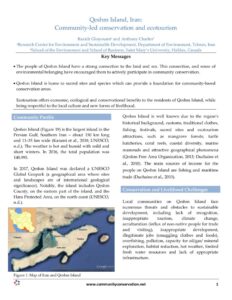
26 Sep Qeshm Island, Southern Iran
Razieh Ghayoumi and Anthony Charles
Key Messages
• The people and communities of Qeshm Island, a UNESCO Global Geopark, have a strong connection to the land and sea. This connection, and a strong sense of environmental belonging, has encouraged them to actively participate in community conservation, and to develop sustainable livelihoods.
• Qeshm Island is home to sacred sites and species, which can provide a foundation for community-based conservation areas.
• Ecotourism offers economic, ecological and conservation benefits to the residents of Qeshm Island, while being respectful to the local culture and new forms of livelihood.
Community Profile
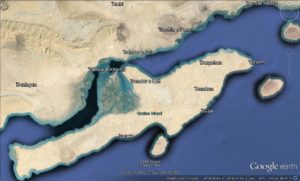
Figure 1: Map of Iran and Qeshm Island
Qeshm Island (Figure 19) is the largest island in the Persian Gulf, Southern Iran – about 130 km long and 11–35 km wide (6, 12). The weather is hot and humid with mild and short winters. In 2016, the total population was 148,993.
In 2017, Qeshm Island was declared a UNESCO Global Geopark (a geographical area where sites and landscapes are of international geological significance)(13). Notably, the island includes Qeshm County, on the eastern part of the island, and the Hara Protected Area, on the north coast(12).
Qeshm Island is well known due to the region’s historical background, customs, traditional clothes, fishing, festivals, sacred sites and ecotourism attractions – such as mangrove forests, turtle hatcheries, coral reefs, coastal diversity, marine mammals, and attractive geographical phenomena(9,3). The main sources of income for the people on Qeshm Island are fishing and maritime trade(3).
Conservation and Livelihood Challenges
Local communities in Qeshm Island face numerous threats and obstacles to sustainable development, including lack of recognition, inappropriate tourism, climate change, acculturation (influx of non-native people for trade and visiting), inappropriate development, illegitimate jobs (smuggling clothes and foods), overfishing, pollution, capacity for oil/gas/mineral exploration, habitat reduction, hot weather, limited fresh water resources and lack of appropriate infrastructure.
Community Initiatives
Two decades after development increased on Qeshm Island, the local people show resilience to detrimental change and they have increased their efforts to keep their traditions alive, conserve the environment, and build the economy in a way that fits with local values. The local communities reflect a sense of belonging, livelihood needs and spiritual and social values in their involvement with conservation, and in learning how to develop tourism based on their natural attractions and their culture(9).
Culture
Communities are working to maintain or restore various cultural activities. Among them are the following three examples drawn from Ghayoumi (2014):
- In Salakh village, in the south of the island, as well as other communities, celebrations of the Fisherman’s Norooz (Norooz-e Sayyad) – a ‘new year’ for the fishery – take place in late July. On this day, people do not fish or consume seafood, believing that the aquatic resources need a break for reproduction. They swim in the sea, in order to be fresh and healthy until the next Fisherman’s Norooz. In the festival, people wear new clothes, prepare many types of traditional foods, and engage in traditional drumming, dance and plays(7).
- Various tree species are considered sacred by the local people. One of these is the fig tree (loor or lool, its local name), large trees that are respected particularly as a result of the shade they provide, important in hot weather. Fig trees have a deep connection to Indigenous life and culture, with some even having their own individual names, and some being considered ‘wish trees’ as people believe their wishes will be granted by the tree(4).
- Tela wells (in the historical port of Laft) are sacred to the local people. The wells are ancient but their age is unknown. There were once 366 wells, each with a specific name. However, due to storms and earthquakes in recent years, the number of wells has been reduced to around 100(1,2,8).
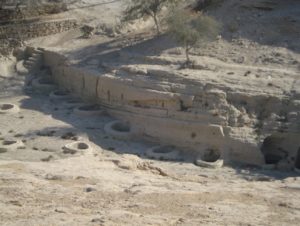
Figure 2: Tela sacred wells in Laft Historical Port, Qeshm Island
- In the past, methods for efficient water use were extremely important, as was the sustainable use of natural resources. A female water guardian, or water master known as a Mirab, carried out traditional water management(1). Due to climate change, decreases in water resources and cultural changes in water use, as well as the modernisation of lifestyles and consumption patterns, local people use these wells much less than before.
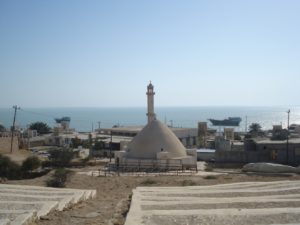
Figure 3: A water reservoir in Laft Historical Port, Qeshm Island
Conservation
Local residents of Qeshm Island voluntarily participate in conservation programmes such as sea turtle (Hawksbill) conservation (Hawksbill). In Shibderaz Village, in collaboration with the village council and Qeshm Free Zone Organization, around 25 km of the south coast has been declared a turtle breeding and hatchery area.
During the nesting and hatchery season, local people educate the public, patrol beaches, tag turtles, collect eggs, transfer eggs to special safe sites and guard the eggs (see photo). Women make different kinds of handicrafts with the sign of the sea turtle. They also have ecotourism activities to introduce their village and turtle conservation programme to tourists(11).
The appreciation for the benefits of conservation has led to local interest in building a community-based marine and coastal conservation area on Qeshm Island, before development makes a greater impact. This protected area could be developed in a manner that draws on the successful models practiced in other countries, such as Australia, and incorporates research, monitoring and education(10). In any case, the model used should be localised to fit the needs and aspirations of the Qeshm Island community. Mechanisms, such as Indigenous marine resource use, monitoring, research and education, could be used to help manage areas of interest, since there is recognition of the value of a mixture of techniques and conservation approaches. Such an initiative will create more opportunities for the local people to become involved with conservation and tourism activities. In this regard, governmental and non-governmental organisations (NGOs), universities and research institutes could benefit from the support of the island community to develop local capabilities, and should provide assistance to establish a community-based marine conservation area through community involvement, networking, workshops, training activities and research.
Practical outcomes
Qeshm Island, as a special place of biodiversity and history, has many tourist attractions specific to the island’s features, such as the traditional architecture called louvers, which are particularly prevalent in the historical port of Laft. Water reservoirs spread out everywhere on the island and dhow (fishing boat) building and traditional dance and folk music are part of the traditions of the local residents(9,2,8).
Communities lead various ecotourism activities, including tours to see dolphins, mangrove forests, turtle nesting sites, coral reefs, nature attractions, natural sacred sites, historical tours and scuba diving. Tourists can also purchase handicrafts and enjoy local food cooked in a community member’s home(9). Such activities have provided economic, social and environmental benefits to the community, including job creation and reduction of the rate of emigration. It seems that the increase in forms of ecotourism that focus on community traditions and natural attractions has provided Qeshm Island residents with the opportunity to preserve and maintain their culture and natural resources, notably the traditional practices that are, on Qeshm Island, often associated with conservation and sustainable use of natural resources.
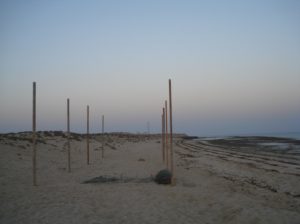
Figure 4: Setting up a safe place for turtle egg hatching and monitoring in Shibderaz village, Qeshm Island
References
- Dashtizadeh, A. (2012). Qeshm; Heritage of the Persian Gulf. Cultural Heritage, Handicrafts and Tourism Organization. Qeshm Free Zone Organization.
- Dashtizadeh, A., Fazel, M. and M. Zobeiri, A. (2013). Laft Port in “Qeshm Island Geopark, the Land of Beauty”, Monthly News Magazine, Qeshm Island Geopark, No. 1: 3. Available at: http:// qeshmgeopark.ir/files/files/file/b5f913ab-fe3c-490c-97b9- 607f1cebd14a/Qeshm%20Island%20Geopark%20The%20 Land%20of%20Beauties%201.pdf (in Persian)
- Duchaine, J., Hughes, H., Flippin, A. L. and Murphy, S. (2010). Frommer’s 500 extraordinary islands. Hoboken, N.J: Wiley Publishing Inc.
- Fallahtabar, N. (2017). ‘The state of ecotourism in sustainable development of Qeshm (By utilizing of SWOT model)’. Quarterly of Geography (Regional Planning) 7(1): 29–42. Available at: http://www.jgeoqeshm.ir/article_44986.html (in Persian)
- Ghayoumi, R. (2014.) Marine and Coastal Indigenous and Community Conserved Areas (ICCAs) in the South of Iran and a Review of Related Laws. The United Nations-Nippon Foundation Fellowship Programme. Division for Ocean Affairs and the Law of the Sea. Office of Legal Affairs. United Nations. New York. Available at: https://www.un.org/depts/los/nippon/ unnff_programme_home/fellows_pages/fellows_papers/ Ghayoumi_1314_Iran.pdf
- Karami, Z., lotfi, H., Naseri Manesh, A. (2018). ‘Planning tourism development in Iran with emphasis on the development of Persian Gulf islands; Qeshm Island’. Geography (RegionalPlanning) 8(4): 369–393. Available at: http://www.jgeoqeshm. ir/ _action=article&au=470492&_au=Karami,%20Zein%20al- Abedin (in Persian)
- Moormogoui, M., Fazel and M. Zobeiri, A. (2013). Norooz-e Sayyad Festival (Fisherman Annual Ceremony) Monthly News Magazine Qeshm Island Geopark No. 2: 3. Available at: http:// qeshmgeopark.ir/files/files/file/586adba6-bb85-4b50-9677- 7b9f8db0d178/Qeshm%20Island%20Geopark%20The%20Land%20of%20Beauties%202.pdf (in Persian) (Accessed 30 March 2020).
- Negahban, M. and Jamadi, A. (2012). The Architecture of Qeshm Island. Maahoma: Tehran, Iran. Available at: http:// qeshmgeopark.ir/files/files/file/41517395-884e-4ce0-88b0- a1dcfb6fd0f6/The%20Architecture%20Of%20Qeshm%20 Island.pdf (in Persian)
- Qeshm Free Area Organization (2013). Qeshm Geopark Guide. Qeshm Free Zone, Hormozgan Province, Iran: Qeshm Geopark. Available at: http://qeshmgeopark.ir/files/files/ file/04f4eed6-4e8d-4e63-9f97-326f3460c3ce/Qeshm%20 Geopark.pdf
- Smyth, D. (2008). ‘Just Add Water? Taking Indigenous Protected Areas into Sea Country’. In: D. Smyth, and G. Ward (eds.), Indigenous Governance and Management of Protected Areas in Australia, Chapter 8 pp 95-110. E-book published by the Australian Institute of Aboriginal and Torres Strait Islander Studies. Available at: https://citeseerx.ist.psu.edu/viewdoc/
- United Nations Development Programme/Global Environment Facility/Small Grants Programme (UNDP/GEF/SGP) (2003). Onshore Preservation of Hawksbill Turtle Eggs through Community Participation. Shibderaz, Qeshm. Project Number: IRA-G52-2003, 2004 & 2007- 024(IRA98G52). Available at:http://sgpgef.ir/uploads/Community%20based%20turtle%20 conserv%20(216u).pdf
- United Nations Educational, Scientific and Cultural Organization (UNESCO) (n.d.). ‘Qeshm Island UNESCO Global Geopark (Islamic Republic of Iran)’. UNESCO Earth Sciences [website]. Available at: http://www.unesco.org/new/en/natural-sciences/ environment/earth-sciences/unesco-global-geoparks/list-of- unesco-global-geoparks/iran/qeshm-island/
13 For further information, please see: http://qeshmgeopark.ir/en/pages/geopark/unesco-global-geopark
Acknowledgement
We are grateful to the Division for Ocean Affairs and the Law of the Sea, United Nations, as well as the Department of Environment of Iran, which enabled this research. We would also like to acknowledge the local people who are the traditional custodians of Qeshm Island.
See below for the Persian language abstract for this community story, ” جزیره قشم، جنوب ایران , راهبری حفاظت با مشارکت جامعه و اکوتوریسم”




